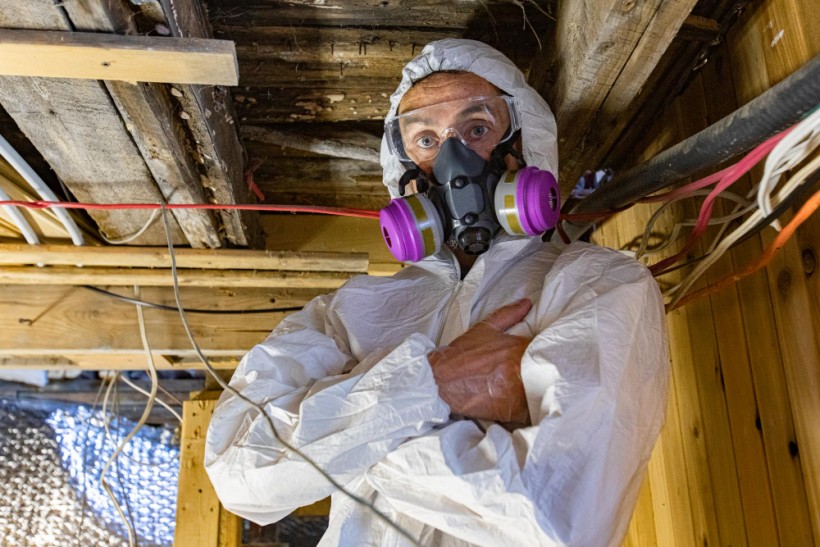What Are The Health Risks of Asbestos Exposure
Warning: Undefined variable $post in /home/dietofli/public_html/wp-content/plugins/code-snippets/php/snippet-ops.php(582) : eval()'d code on line 3
Warning: Attempt to read property "ID" on null in /home/dietofli/public_html/wp-content/plugins/code-snippets/php/snippet-ops.php(582) : eval()'d code on line 3
The estimated reading time is 5 minutes
Warning: Undefined variable $post in /home/dietofli/public_html/wp-content/plugins/oxygen/component-framework/components/classes/code-block.class.php(115) : eval()'d code on line 3
Warning: Attempt to read property "ID" on null in /home/dietofli/public_html/wp-content/plugins/oxygen/component-framework/components/classes/code-block.class.php(115) : eval()'d code on line 3

Asbestos exposure is a silent danger lurking in many corners of our lives, from the buildings we inhabit to the products we use. Its insidious nature and severe health risks make understanding and addressing this issue paramount.
In this article, we will explore the various facets of asbestos exposure, shedding light on its definition, sources, health implications, and preventive measures. By arming ourselves with knowledge and taking proactive steps, we can safeguard our health and advocate for safer environments for all.
Understanding Asbestos and Exposure
Asbestos, a naturally occurring mineral known for its heat resistance and durability, found widespread use in industries such as construction, shipbuilding, and manufacturing due to its insulating properties.
However, the same qualities that made asbestos desirable also make it hazardous to human health.
There are six types of asbestos minerals, each with varying degrees of toxicity. When disturbed, asbestos releases microscopic fibers into the air, which, when inhaled or ingested, can become lodged in the body's tissues, leading to a range of serious health conditions.
Despite its known dangers, asbestos was widely used in building materials like insulation, ceiling tiles, flooring, and roofing until its ban in many countries in the late 20th century.
Understanding where asbestos may be present is crucial to minimizing exposure risk and protecting our health.
Asbestos Exposure and Its Health Consequences
Asbestos exposure poses significant health risks, primarily through inhalation or ingestion of its fibers. According to the New York mesothelioma attorneys at My Mesothelioma, the severity of these risks depends on various factors, including the duration and intensity of exposure, the type of asbestos fibers encountered, and individual susceptibility.
The main health conditions associated with asbestos exposure include:
Asbestosis
This progressive lung disease results from prolonged exposure to asbestos fibers. Over time, asbestos fibers cause scarring of lung tissue, leading to breathing difficulties, persistent coughing, and chest tightness. Asbestosis can significantly impair lung function and increase the risk of respiratory failure.
Lung Cancer
Asbestos exposure is a known risk factor for lung cancer, particularly among individuals with long-term or heavy exposure. Inhalation of asbestos fibers can damage lung tissue and increase the likelihood of developing lung cancer. Smokers exposed to asbestos face an even higher risk of developing lung cancer than non-smokers.
Mesothelioma
Mesothelioma is a rare and aggressive cancer that affects the lining of the lungs, abdomen, or heart. It is primarily caused by asbestos exposure, with symptoms often not appearing until decades after exposure. Mesothelioma prognosis is typically poor, as the disease is often diagnosed at advanced stages when treatment options are limited.
Other Health Complications
In addition to the aforementioned diseases, asbestos exposure may increase the risk of other cancers, including ovarian cancer, laryngeal cancer, and gastrointestinal cancers. Furthermore, exposure to asbestos can lead to non-cancerous respiratory conditions such as pleural plaques and pleural effusion.
Understanding the spectrum of health risks associated with asbestos exposure is essential for identifying potential symptoms early and seeking appropriate medical attention.
If you suspect you have been exposed to asbestos or are experiencing symptoms related to asbestos-related diseases, it is crucial to consult a healthcare professional promptly. Early detection and intervention can improve treatment outcomes and quality of life for individuals affected by asbestos-related conditions.
Occupational Exposure and Vulnerable Populations
Certain occupational groups face a higher risk of asbestos exposure due to their work in industries where asbestos-containing materials were commonly used.
Construction workers, shipbuilders, mechanics, electricians, and asbestos miners and processors are among those most at risk. These individuals may encounter asbestos fibers during activities such as demolition, renovation, maintenance, and repair work.
Additionally, individuals who live or work in older buildings constructed before the 1980s may be exposed to asbestos-containing materials such as insulation, ceiling tiles, flooring, and roofing materials.
Schools, hospitals, and public buildings are examples of environments where asbestos exposure remains a concern. Furthermore, children and young adults in educational settings may face heightened risks due to their longer life expectancies and developing respiratory systems.
While efforts have been made to regulate and mitigate asbestos exposure in occupational settings and public buildings, continued vigilance is necessary to protect vulnerable populations.
Employers and building owners have a responsibility to implement measures to minimize asbestos exposure, such as conducting asbestos surveys, implementing proper abatement procedures, and providing adequate training and protective equipment to workers.
Individuals who believe they may have been exposed to asbestos should monitor their health closely and seek medical evaluation if they experience symptoms such as persistent coughing, shortness of breath, chest pain, or unexplained weight loss.
Early detection and intervention can help mitigate the health impacts of asbestos exposure and improve outcomes for affected individuals.
Early Detection & Prevention Are Essential
In conclusion, asbestos exposure poses significant health risks, including the development of serious and often fatal diseases such as asbestosis, lung cancer, and mesothelioma.
Understanding the health risks associated with asbestos exposure is crucial for protecting oneself and others from harm. By recognizing the sources of exposure and taking preventive measures, individuals can reduce their risk of asbestos-related diseases.
Early detection and prevention are essential in mitigating the impact of asbestos exposure. Being aware of potential exposure sources, following safety regulations in workplaces and older buildings, and seeking medical attention if exposed are critical steps in protecting against asbestos-related diseases.
Advocacy and awareness efforts are also instrumental in addressing the challenges posed by asbestos exposure. By raising awareness about the health risks of asbestos, advocating for stricter regulations, and supporting individuals affected by asbestos-related diseases, we can work together to prevent future cases of asbestos-related illnesses and promote public health.
It is essential for individuals to educate themselves about asbestos risks, advocate for safer working environments, and support initiatives aimed at asbestos safety and awareness. By taking proactive measures and supporting advocacy efforts, we can create safer environments and protect ourselves and future generations from the harmful effects of asbestos exposure.














